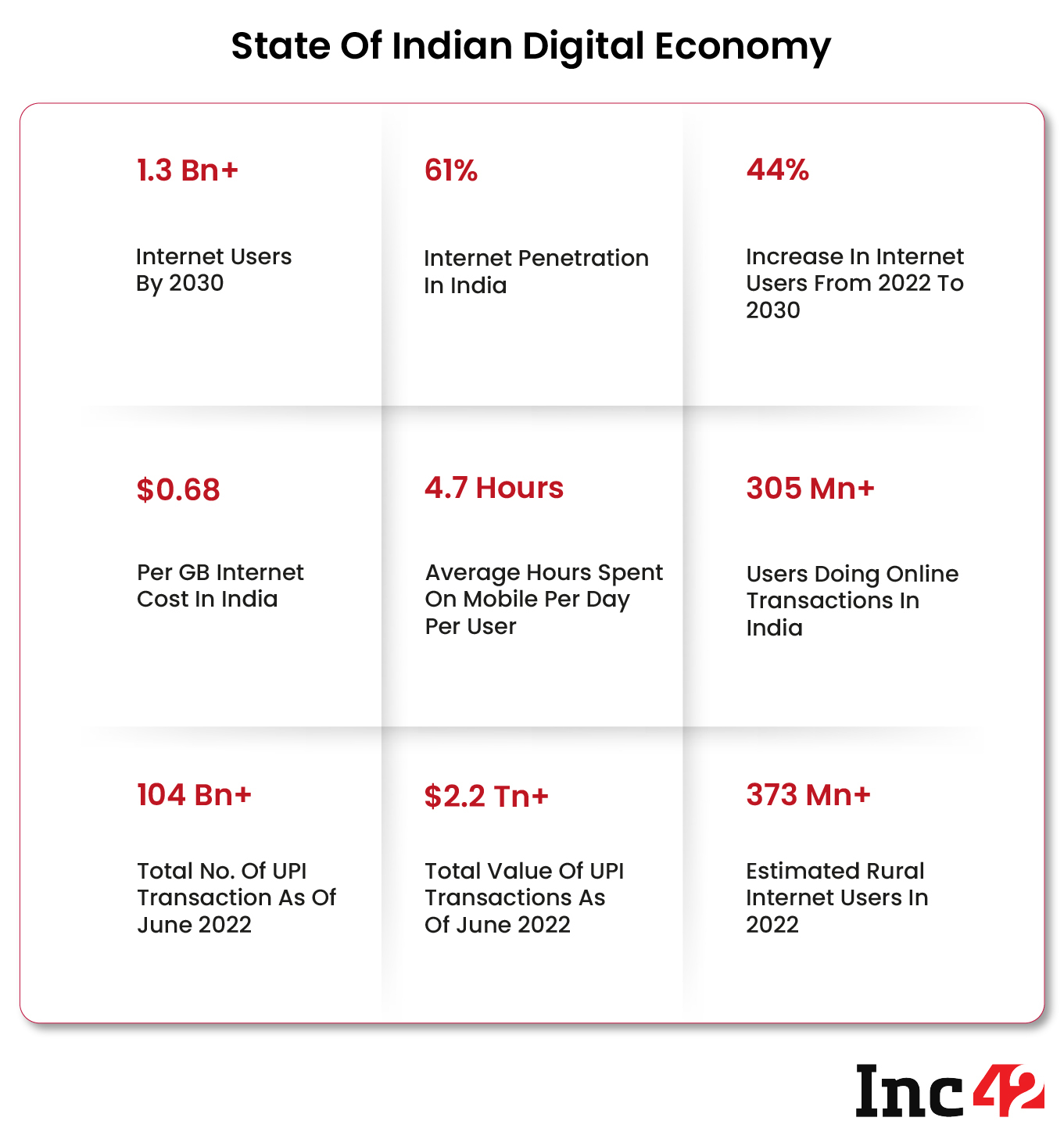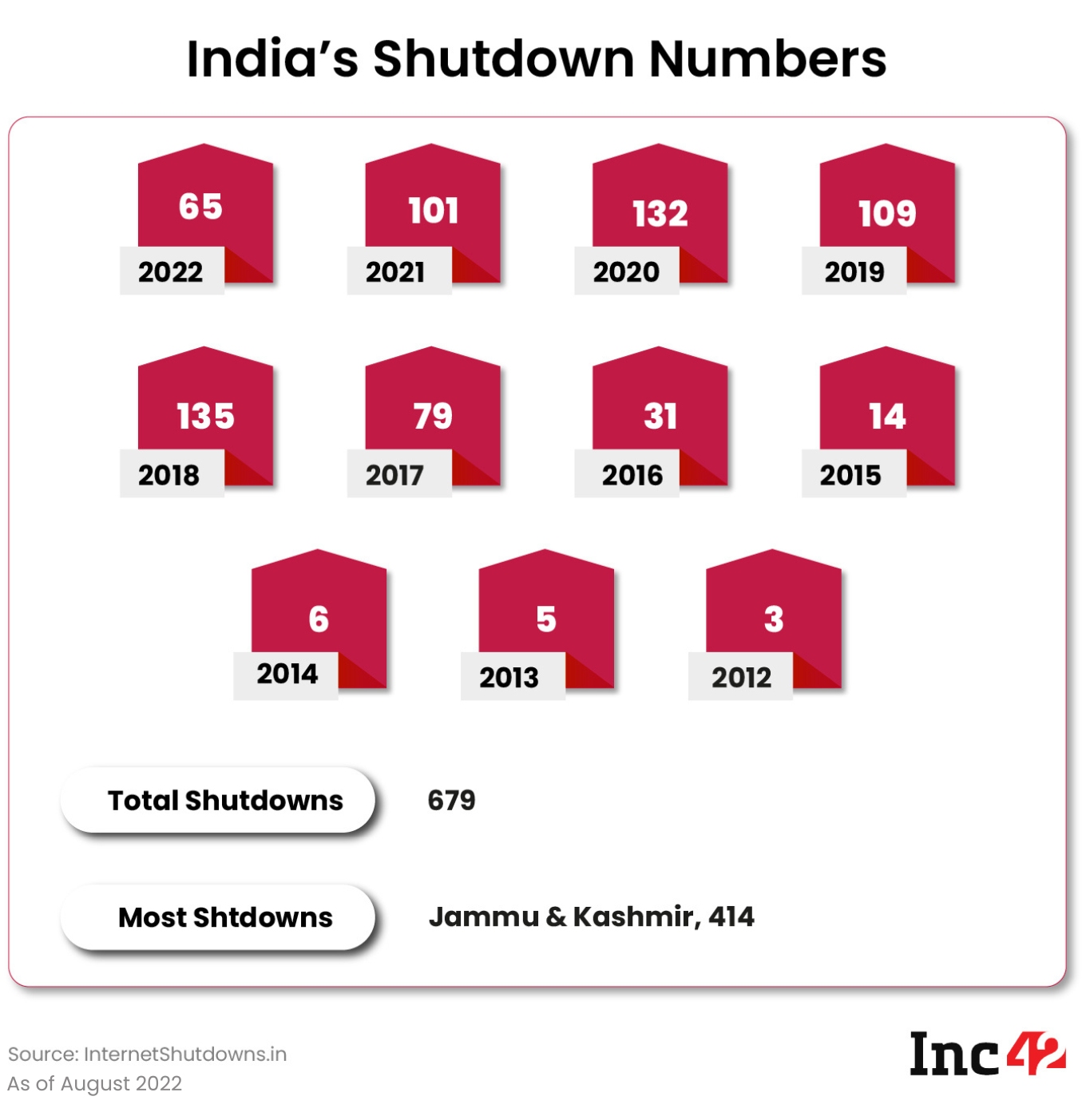Ahead of the 75th Independence Day tomorrow, we wanted to look at how India’s internet ecosystem is caught staring at a massive opportunity ahead, but is also held behind by the roadblocks
As Indians all over got set to celebrate the 75th Independence Day last week, social media and WhatsApp profile pictures went from displaying selfies to the national tricolour. Digital India is taking a new form in 2022.
While filters that paint your profile picture in the colours of the flag have been prevalent for years, this is the first time that thousands of Indians have opted to use a flag as their online avatars. National identity is getting strongly linked to our internet identity and it’s only right given how deeply entrenched the internet has become.
Last year, we’d taken a look at just how much the internet has changed Indian society, livelihoods and given Indians the drive to build new-age startups. But in the 12 months since then a lot more has changed and if anything the internet has become more insular thanks to some persistent challenges as well as new policy hurdles.
Ahead of the 75th Independence Day tomorrow, we wanted to look at how India’s internet ecosystem is caught staring at a massive opportunity ahead, but is also held behind by the roadblocks. But as usual a look at the top stories of the week before we dive ahead:
- Ola Vs Drivers: Bhavish Aggarwal’s Ola is facing the heat from drivers who have alleged cheating by the company after it abruptly ended the car leasing service amid the pandemic
- Crypto Under Spotlight: The WazirX-Binance acquisition controversy amid the probe by ED into the exchange has once again revived the debate around legitimacy of crypto
- Digital Lending Guidelines: After months of discussions, the RBI has released the digital lending guidelines to help streamline issues in the booming fintech segment
Digital India’s Two Sides
Indians have been part of the internet revolution even way before 2015, through the IT services giants and millions of Indian-origin engineers in Silicon Valley. But it was only after 2015 with Digital India and the entry of cheap 4G that the real power of the internet was unlocked. Access was eased significantly in terms of cost of services and hardware, and modern digital infrastructure was put in place.
The goal, as stated publicly several times, is to take the digital economy to $1 Tn market size by 2025, and Digital India is the fulcrum to pull this economic lever.
Seven years later, the latent power of the internet in India can be seen in the burgeoning base of Indian language internet content and users. Internet growth in rural areas is faster than urban India on a year-on-year basis 4% for urban India vs 13% in rural areas, as per TRAI data.

Under Digital India, the launch of IndiaStack and UPI changed the game for the cashless economy, and opened up new and innovative businesses. Nearly 450K provident fund accounts have been opened by the top 82 Indian startups in the past four years, as per our data, which hints at the penetration of startups in the formal economy.
But the spate of internet shutdowns, clamping down on free speech online, banning of apps, freezing of bank accounts of tech companies, restrictions on VPN players and stringent compliance rules and flipflopping on several key internet-related legislations have been at odds with these growth efforts.
While the internet has undoubtedly made India a more open market and society, the flipside is that the rapid penetration and the ubiquity of the internet has resulted in a digital divide that was greatly apparent during the lockdown last year and then in the subsequent months when everything from entertainment to education went online.
Shutdowns & The Internet Economy
By far the biggest criticism of the government has been in its heavy-handed policing of the internet through shutdowns. The official version is that shutdowns tackle misinformation in times of unrest, but in many cases it has crippled the local economy in impacted areas, particularly the months-long blockades.
The Indian economy suffered a loss of over $2.8 Bn due to 129 internet shutdowns in 2020, according to reports.
The startup ecosystem has made the most of the growing internet penetration, but shutdowns do impact their operations.

“Shutdowns affect businesses in digital payments, ecommerce and even B2B services. In my opinion, in the past two years, it has also disrupted remote operations for many of our employees who had moved back home from cities,” said the founder of an insurtech startup that works with SMBs in Tier 3/4 towns.
A senior market analyst at a Big Four firm pointed out that while bans have been a regular feature in India in the past — the difference is the scope of the impact because of the significance of the internet.
“What we should be concerned about is the banning of the medium itself. Books or movies have been banned, but the government did not cease all publishing or all film production. The internet shutdowns is a misuse of power in this context,” the analyst said on the condition of anonymity.
Searching For An Open Internet
Beyond access to the internet itself, recent policy decisions and tax investigations are likely to create some infrastructure hurdles.
Amid a geopolitical standoff with China since June 2020, the Indian government has focussed intensely on data security by banning not just over 200 apps of Chinese origin, but it has also looked to clamped down on foreign investments from land-border countries which has resulted in many Chinese investors such as Shunwei, Xiaomi Corp and others exiting from startups.

The recent investigations into Xiaomi, Huawei’s Honor, Vivo and other smartphone brands have also given some cause for concern to international companies in relation to India’s tax laws.
In addition, since May this year, virtual private network (VPN) and cloud service providers have been told to collect and hold data pertaining to customers for a period of five years. Following this, a few VPN service providers said that they would exit India — NordVPN, Surfshark and ExpressVPN have already logged out of India.
Social media giants such as Meta and Twitter have taken the legal recourse to push back against the IT guidelines. The government’s comply-or-exit stance on these matters have definitely made some big tech companies nervous.
While the overarching objective of data security is indeed critical, the heavy-handed approach and the ultimatums have been criticised. In private, investors and internet economy analysts believe that if India continues to walk down this path, the result will be another forking of the internet.
“There’s one global internet which is backed by the US and Europe, which is often called the open internet. China and Russia have their own firewalls. India is slowly moving away from the open internet in many ways with these changes for VPNs and encryption,” said the analyst quoted above.
Many have supported the idea of a potential Digital India Act, saying that a lot has changed in the technology landscape since the original IT Act was brought into effect decades ago. We definitely need a data privacy policy, cybersecurity policies and guidelines, as well as laws related to cybercrime and operations of digital commerce platforms. The long-delayed data protection bill, the draft of which was recently withdrawn by the Indian government, is a testament to the slow wheels of legislation.
Finding the balance between regulation and promoting innovation will be a critical challenge for India’s future — as an internet nation, we are still young, but growing fast, so there will be plenty more growth pains.
Whether or not legislation is the answer is unclear, but a revamped and modern law for the internet economy will be key to leaving the current policy dichotomy behind, and take India into the next phase of independence.
Tech Stocks & Startup IPO Tracker
Here’s how the past week has been for the listed tech companies we are tracking:

Startup Funding Tracker

Airtel 5G & Other Top Stories
That’s all for this week. Look forward to seeing you next Sunday with another weekly roundup










